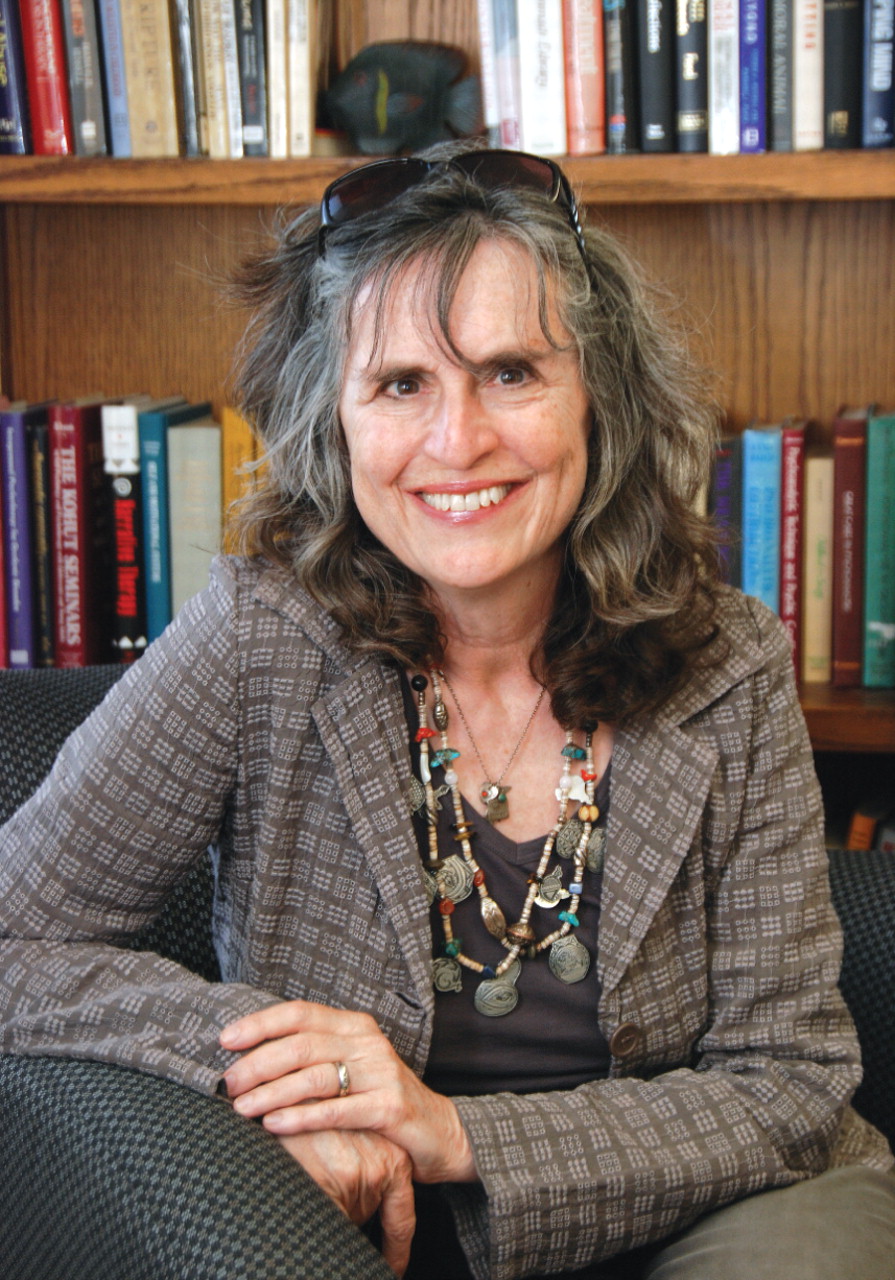Maria Elena Arizaga, M.D., is in her fourth year of residency in the Department of Psychiatry at the University of New Mexico (UNM) in Albuquerque. She works two days a week as part of her training at Hidalgo Medical Services, an outpatient, federally funded agency in Silver City, N.M., population 30,000, and Arizaga's home town.
Placing residents in rural clinics is just one piece in the mosaic that her department has put together to help address the shortage of mental health services in remote and underserved parts of the state (see
Rural Psychiatry Isn't Easy, but Rewards are Ample).
New Mexico is a state marked by high desert, deep canyons, steep mountains, open spaces, great distances, a thin economic base, and a scattered and ethnically diverse population. Most of those facts make it an extraordinary place to visit, but the combination also makes connecting people with medical care—especially mental health care—all the more difficult.
Outside the capital, Santa Fe, or the state's largest city, Albuquerque, a psychiatrist may put in more time driving (or flying) than seeing patients. Patients may have to drive for hours to reach the nearest clinic or even a remote telehealth site.
Closing that gap is an uphill struggle in many parts of rural America. Myriad solutions have been tried, from federal loan forgiveness programs to telepsychiatry.
The Department of Psychiatry at the University of New Mexico School of Medicine has adopted a number of initiatives to bridge the gaps—collaboration with other behavioral health professionals, integration of psychiatry with primary care, computer technology for telehealth services, and programs tailored to the state's large Native-American and Hispanic populations.
But for the last 14 years, the residency option, part of the Rural Psychiatry and Behavioral Health Training Program, has been at the center of efforts to reach the underserved. The rural track sends psychiatrists in training to clinics in outlying areas of the state to learn, to provide clinical services, and to awaken residents' interest in working there after they complete the program.
Arizaga is a part of this solution. In her PGY-4 rotation, she works with primary care providers to clarify diagnoses and manage medications. She does psychiatric evaluations and may see a patient from one to three times before transferring long-term management to the primary physician.
In most ways, the UNM residency program is like most others, said Stephen Lewis, M.D., an assistant professor of psychiatry and head of the residency program. It meets all the usual standards of the Accreditation Council for Graduate Medical Education, but differs because of the special ethos of the entire medical school and the added dimension of the rural track.
“I'm a UNM medical school grad, and if there's one thing they ingrain in you, it's that New Mexico is a poor state, and it funds the medical school to provide a service to the state,” said Lewis. “This is the underlying premise of all specialties here. We've turned out good scientists and researchers, but our goal is to produce good clinicians. When we're interviewing candidates for residency, we ask ourselves—how will our decision affect practicing medicine in the state?”
The rural residency track began 14 years ago, shepherded by Helene Silverblatt, M.D., an associate professor of psychiatry and family and community medicine and medical director of the rural psychiatry program. The program is funded by a contract with the Behavioral Health Services Division of the state's Department of Human Services.
Silverblatt built the program by connecting with small-town clinics around the state and finding psychiatrists who already practice there to help with supervision.
“We don't oblige residents to go into the rural program, but will accommodate anyone who chooses to do so,” said Silverblatt. “About four or five—half the average of eight residents in each class—do the rural training.”
They arrive by different routes. Some come from rural backgrounds, others grew up in cities. Some hear about the rural track early and choose New Mexico for that reason, while others find out later.
The program initiates residents gently. They travel to a rural site for one day each semester in the second year of residency. In the third year, they go out one day a month, mainly to observe how that site works and to develop ideas for their fourth year, when they spend a day or two a week for between six months and a year. Their assignment goes well beyond practicing psychiatry though.
“The program encourages psychiatry residents to integrate into the community, and not just be a prescription writer,” said Silverblatt.“ We try to vary the experience. They may teach other staff, or visit the local schools, or develop some research project, or learn negotiating skills—like how to refuse to work in 10-minute blocks doing med checks.”
She gets the rural residents together once a month for lunch to share experiences.
Rural Psychiatry Builds Different Skills
If Arizaga was drawn to rural psychiatry by her own roots in the state, two others took the long way around.
Caroline Bonham, M.D., came to New Mexico precisely to do rural psychiatry. She was born in the United Kingdom, the child of American parents, and went to medical school at the University of Nottingham.
“I like the land and the experience of meeting different people,” she said. “In rural clinics the teams are smaller; the interdisciplinary training is less siloed.”
Now in a fellowship year, Bonham is working on a research project on behavioral health in rural areas. She's learned that attitudes about mental illness vary by subpopulations. In rural areas, she finds, people adopt a less biological point of view than their urban counterparts.
“They'll talk about community and explain things by unemployment or drugs,” she said. “There's not more stigma, but a different kind of stigma.”
Differences go beyond that, as well.
“A lot of evidence-based psychiatric services are validated in urban settings, but many won't work in rural areas,” she said. For instance, with smaller staffs, people often have to double up on tasks.
She's also doing a clinical rotation, flying once a month to Carlsbad, N.M., and doing further consultation twice a week via telehealth. In Carlsbad, she's booked all day with patients, doing a mix of initial one-hour evaluations and medication discussions. She supervises two therapists and discusses patients with them. She also sees some developmentally disabled patients, who come in with their parents and case managers.
“In Carlsbad, I see a similar mix of patients as I might in a city, but also a lot more co-occurring disorders complicated by methamphetamine use,” she said. Many people have less access to psychiatry and to medications. “I see many more cases of never-treated major depressive disorder than in Albuquerque, because here they would be treated in primary care.”
Florian Birkmayer, M.D., grew up in Austria and Germany, came to the United States for college (Princeton) and medical school (Columbia). He went to UNM for his residency and did his rural rotation at Na'Nizhoozhi Center Inc., a Navajo alcohol detoxification and rehabilitation center in Gallup, N.M.
“I was always interested in Native-American culture, and I wanted to learn how to use Navajo traditions in a clinical setting,” he said.“ The Navajo were very kind and took me under their wing. The key was not my job description but the relationship.”
He arranged to get a full two weeks away from the medical school during residency and went to ceremonies in a sweat lodge and the hogans (traditional Navajo houses). People explained to him traditional healing and, with that knowledge, he could serve as a bridge to hospitals.
Arizaga also seeks to tie contemporary psychiatry to indigenous healing traditions. She hopes to learn more about curanderismo, a form of Latin American folk healing, because many of the Hispanic patients she sees in Silver City believe in its value.
Curanderismo looks not only at the individual but also at the family and community surrounding them, said Arizaga.
“I see a lot of analogies with psychodynamic therapies,” she said. “There are a lot of transcultural differences and similarities—but more similarities.”
Understanding the local cultures is a necessity in New Mexico, said Bonham.“ When I began, there were things I didn't know or I felt uncomfortable asking.”
However, the rural program gave her more confidence to ask patients about their lives and plans. Now, if patients want to take part in a Navajo healing ceremony, she knows they will be fasting and spending time in a sweat lodge, and she will adjust their medications accordingly.
She's also learned about the challenges facing her patients in the simplest aspects of medical care.
“Don't assume that the same resources are available to your patients,” she said. “If you ask them, 'Where do you get your medications?' it may be 90 miles away.”
Program Hits Goals
Most of the graduates of the program stay in New Mexico, and perhaps 25 percent end up in rural areas, said Lewis. About half practice in underserved areas.
Birkmayer specialized in addiction psychiatry now and is an assistant professor at the medical school. He lives in Albuquerque but maintains contacts with clinics around the state. “You don't have to live in a small town to work there,” he said.
After residency, Arizaga plans to return to Silver City and extend her family's commitment to the medical profession there. Her father practices dermatology and her mother holds a Ph.D. in clinical psychology.
Her sister, Teresa Arizaga-Morales, M.D. (another UNM grad and former resident), is an inpatient attending psychiatrist at the Gila Regional Medical Center in Silver City. The two have talked about how best to help their community and provide services to the underserved.
Maria Elena has decided that to reach the greatest number of people when she returns home, she will eventually develop a consultation service and medical management practice and serve as an outpatient consultant to jails, schools, and nursing homes.
When she does, she'll be doing her part to complete the vision of UNM rural psychiatry residency program.

